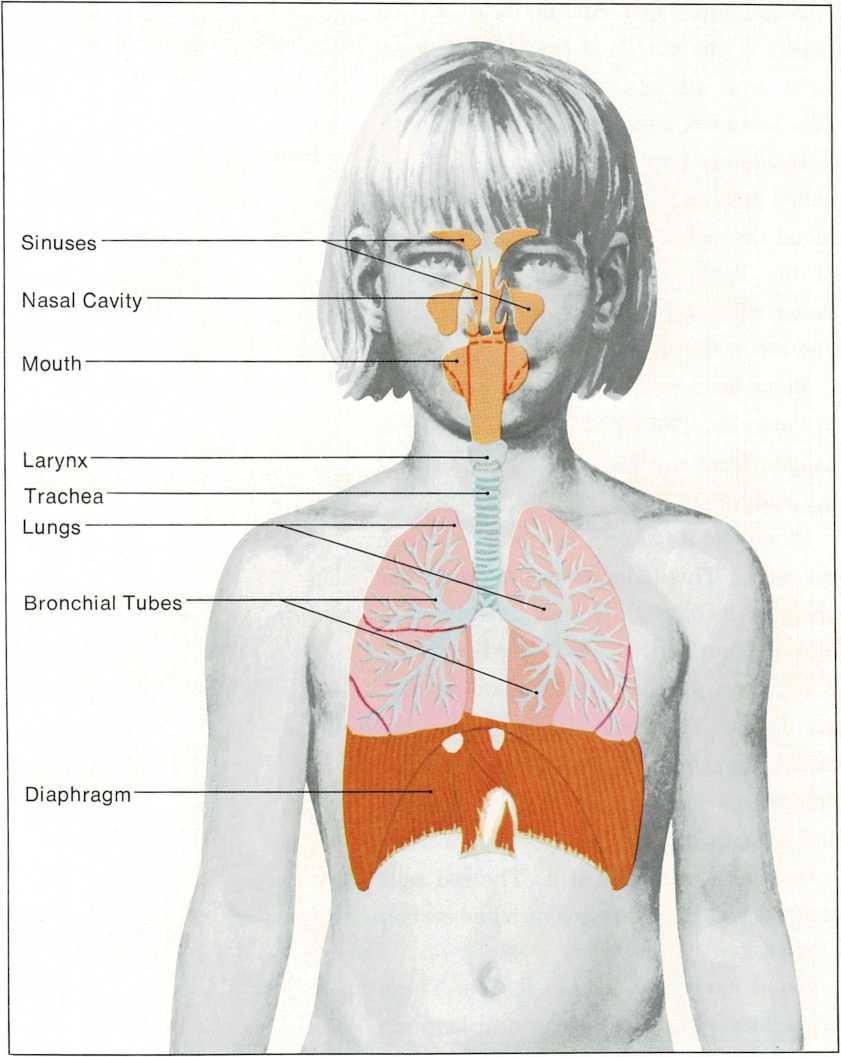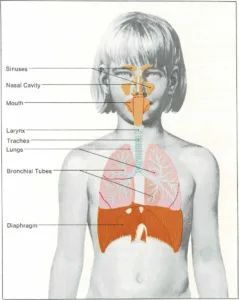Air for my body
When I breathe, air enters my nose. The inside of my nose warms the air.
Little hairs in my nose catch the dust in the air. The wetness in my
nose catches most of the germs I breathe in.
The warm, clean air goes down a tube called the trachea, and into my
lungs. I can feel my trachea in the front of my throat.
My lungs are in my chest. My ribs make a kind of cage around my lungs
that protects them.
Below my lungs is a strong muscle called the diaphragm. My diaphragm and
the muscles fastened to my ribs move my chest in and out, in and out.
When my chest moves out, fresh air comes into my lungs. When my chest
moves in, used air leaves my lungs. My muscles and bones help me
breathe.
The air I breathe in has oxygen in it. Oxygen is a gas. I can’t see,
taste, feel, or smell oxygen. But my body needs it to live.
The air I breathe out has carbon dioxide in it. My body makes more
carbon dioxide than it needs. I breathe out the extra carbon dioxide.


